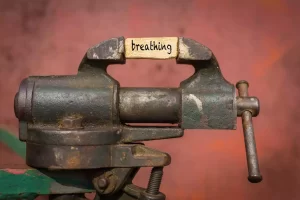
MOTION IN THE CENTRE OF THE BODY HAS TO BE EFFICIENT
Home » More about the AEQ method and sports » MOTION IN THE CENTRE OF THE BODY HAS TO BE EFFICIENT
Common cause for problems with the joints of arms, legs and neck is sensory-motor amnesia (SMA) of the body’s center and improper muscle tone of the torso causing the pelvis to move incorrectly
We are learning from the birth on how to engage muscles correctly and democratically when moving. A democratic application of a muscle means that a muscle works in harmony with other muscles in a move and according to strength and lever assigned by the evolution. A child is improving quality of control of the muscles by learning how to move. Better knowledge about the motion and gaining the skills can only be the result of learning how to move, and the learning enables a child increasingly better control of the movement potential given to him at birth. However, a child has only limited muscle strength so he does not have other options but to discover and perfect the correct democratic use of his muscles to be able to perform the moves. Better coordination of large number of muscles used in a movement enables better efficiency, which we sense as a pleasant movement (pleasure).
On the contrary, less efficient movement, deriving from poor coordination, is perceived as unpleasant and, if it lasts for a long time, as painful feeling (pain). As seen in observations, a child learning new moves obviously follows a principle: when it is a pleasant motion, he continues exploring and developing in same direction, but when it is unpleasant and painful, he wants to change and end the activity. However, because a pleasant feeling arises from efficiency, a child is still able to gain correct, democratic use of his muscles quite fast. Consequently, a child’s movement can be described as light, playful and delightful to watch. Motion that we rarely see in adults. We need to understand that we use the muscles to make a move in two ways: by shortening a muscle (contract) as well as by lengthening it (relax). Most people have a misconception that creating a move means a muscle only gets shorter (contraction).
Muscles work in two ways: they shorten or contract, and they lengthen or relax.
The strongest muscles with the best levers are in the center of torso and they connect chest and legs. Unfortunately, this is where the SMA appears first and then affects the potential ability of the nervous system to reduce, when it is useful, the muscle tone to zero. All this leads to progressively insufficient coordination and reduction of the democratic use of muscles and hence efficiency. Movement becomes the source of unpleasant emotions and harder to execute, or we do it by force, therefore we get a feeling of lacking the strength and endurance. SMA is involuntary so we are not aware of the real reason for losing efficient, pleasant motion, but despite not having enough feeling, control, coordination and efficiency we continue to put even more effort and stubbornness into our motion even if every move or walking hurts and it is unpleasant. Nevertheless, all that can be changed, our movement can become fluent again by learning slow, pain-free moves voluntarily, the moves with a purpose to learn and not to achieve the results. Like children do it.
Focus on results and lack of learning are the two of many features of the modern fast-paced way of life, they are also amongst the reasons for losing the feeling for movement. Slow, pain-free moves enable the nervous system to gain better sensibility for more fluent and more effective moves. If we lose this sensibility for a longer period, we soon forget how it is like to be free, light and coordinated in motion, and when we are no longer able to feel, we also lose the ability to understand the move and to do it correctly. Ability to perform, to do a move in a certain way means that we feel and understand our motion. The process named the SMA, the sensory-motor amnesia, results in gradual loss of the abilities and skills, in feeling heavy and imbalanced. Imbalanced and uncontrolled muscle tone restricts motion and demands more effort for basic acts like walking, sitting and standing. Days are becoming heavier and more painful, our only wish is to get the job and movement done as quickly as possible and without paying any attention to what we are doing. We try to avoid pain in different manners with forced moves so we are losing sense for agile, light motion.
Loss of control over muscles immobilizes pelvis and torso, shortens the step length and makes a walk seem rocky and tugging. Joints and spine are strained 24 hours a day and want us to rest, be still even though we are designed for easy and efficient motion. AEQ clinical somatics enables effective adjustment of these conditions, which are usually associated with ageing, low muscle mass and endurance, by learning pandiculation, recognizing and understanding somatic reflexes, SMA and also understanding how stress, tensions and emotions influence muscles, well-being and personality. AEQ method restores our understanding and meaning of the ‘body sense’ and brings back learning and adaptability into our everyday life.
IF WE DON’T IMPROVE WITH AGING WE DO SOMETHING WRONG.
(THOMAS HANNA)






